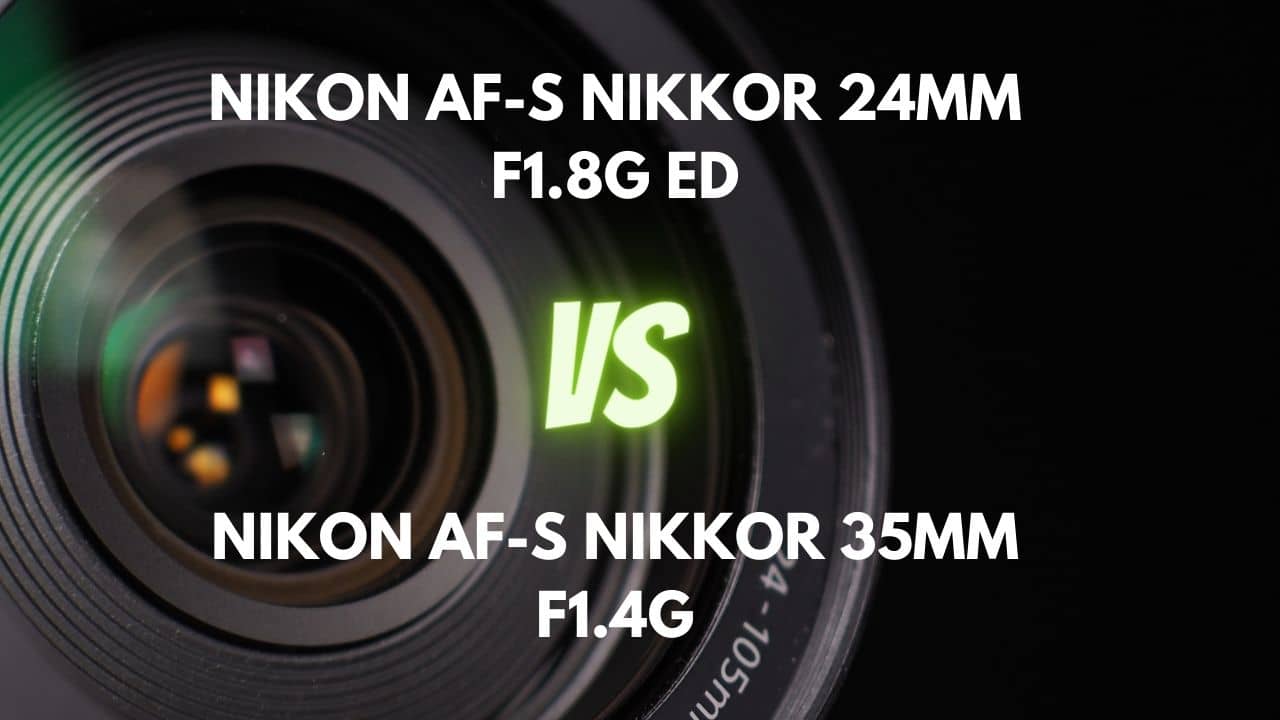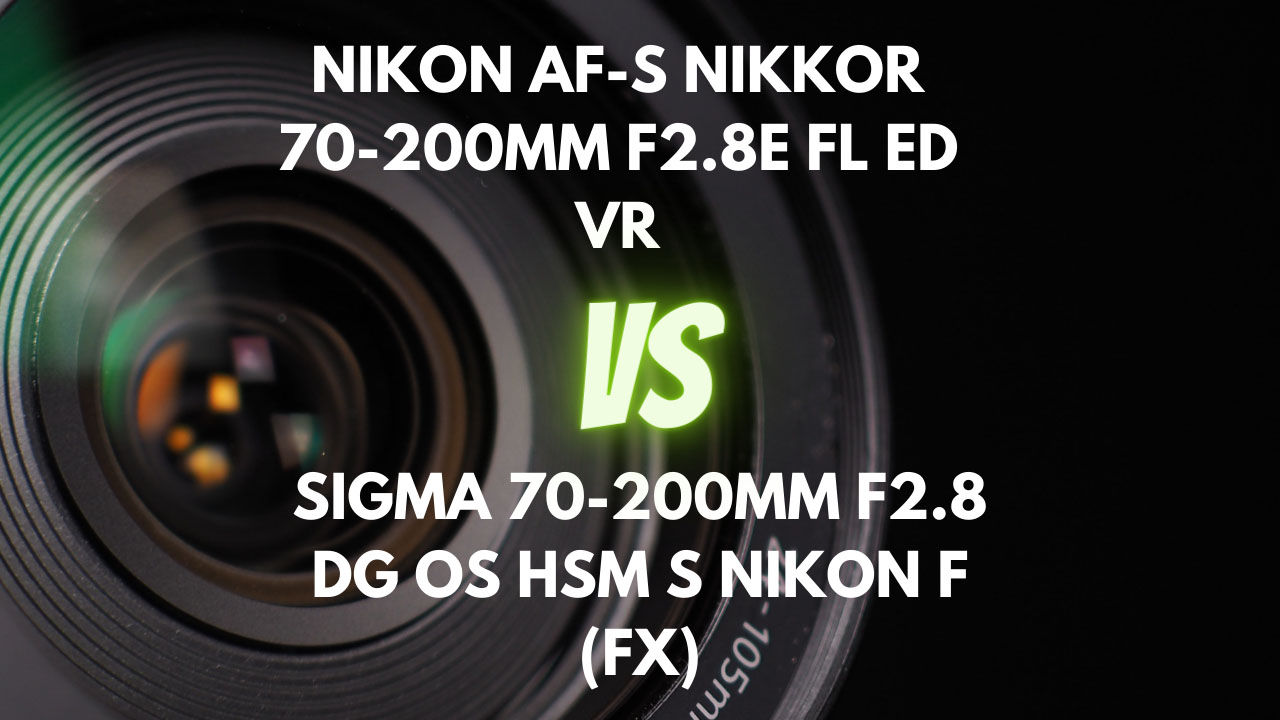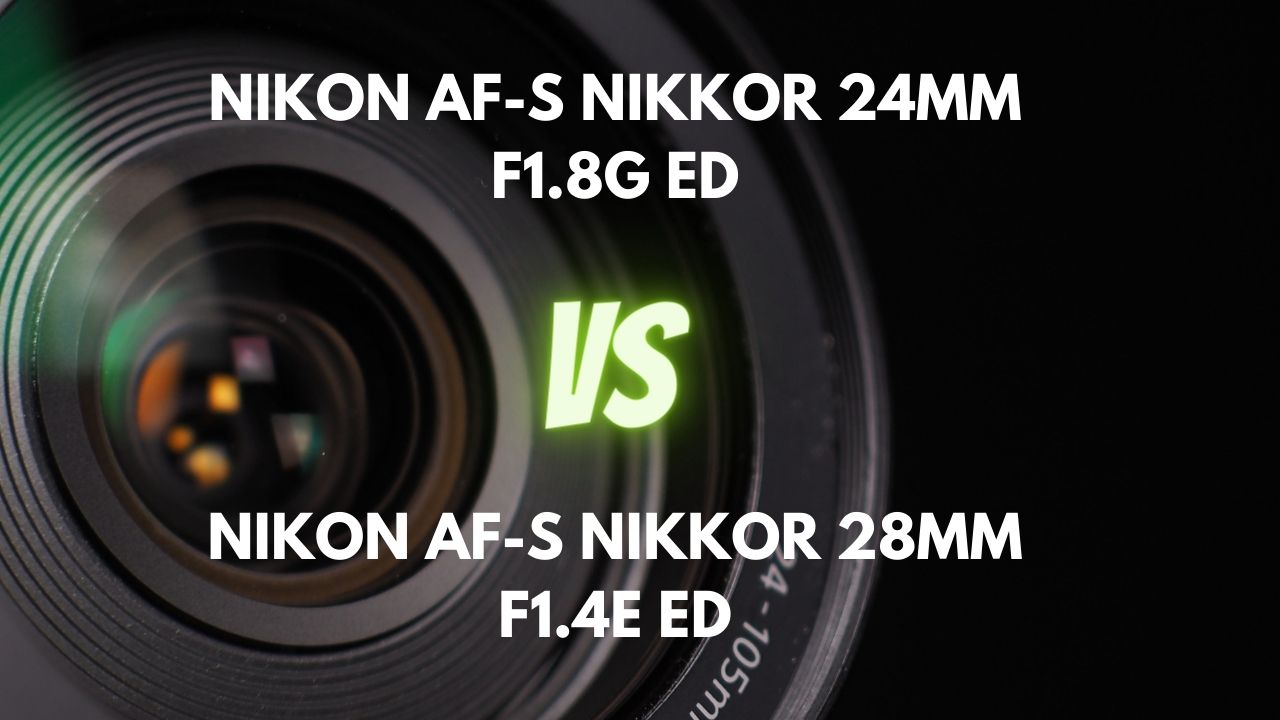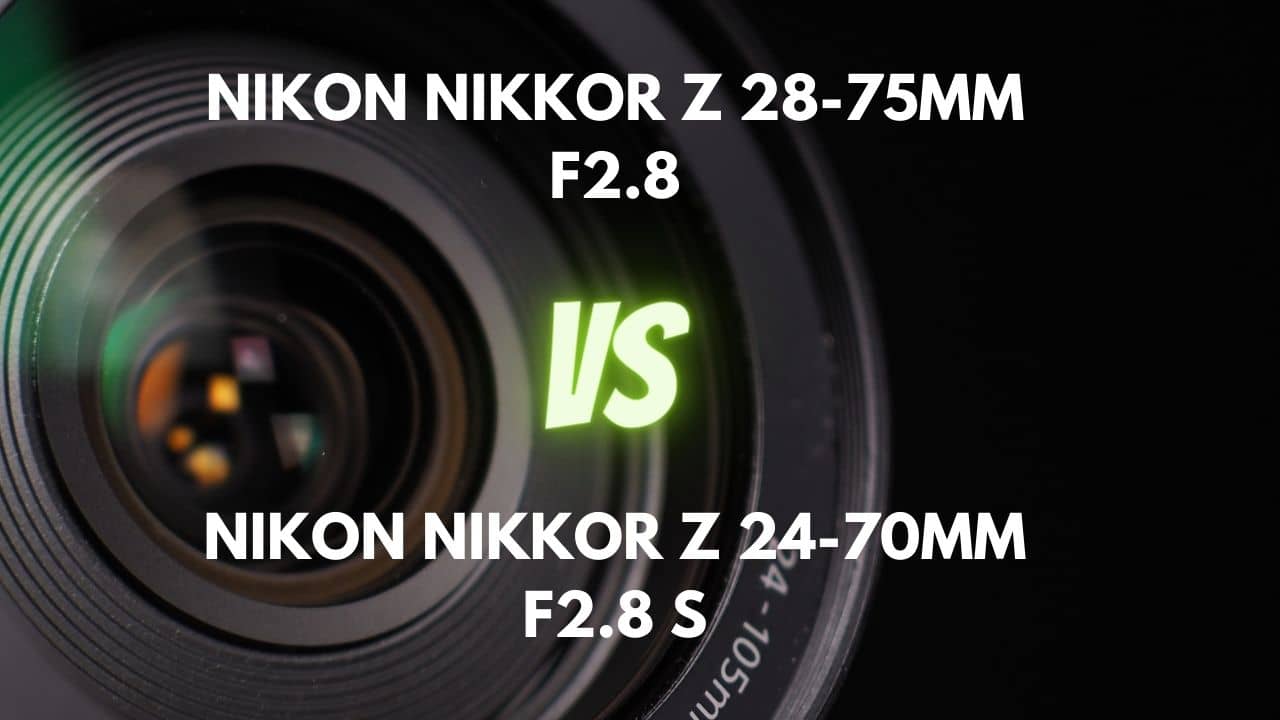Are you ready to dive into the world of ultra-wide-angle photography and capture breathtaking landscapes, intricate interiors, or stunning architectural masterpieces?
If so, you might be considering investing in a high-quality lens that will help you unleash your creativity and achieve those awe-inspiring shots.
In the quest for the perfect ultra-wide-angle lens, two contenders often emerge as top choices: the Nikon 14-24mm f/2.8 and the Sigma Art 14-24mm f/2.8.
Both lenses have garnered much praise from photographers and boast impressive specifications, but how do they truly compare in terms of performance, build quality, and overall value?
In this article, we’ll put these two lenses head-to-head, examining their strengths and weaknesses across various aspects, to help you make an informed decision and select the lens that will best suit your wide-angle photography needs. Let the battle of the ultra-wide-angle titans begin!
Overview
| Nikon AF-S NIKKOR 14-24mm F2.8G ED | Sigma 14-24mm F2.8 DG HSM Art Nikon F (FX) | |
|---|---|---|
| Max Aperture | F2.8 | F2.8 |
| Aperture Type | Fixed | Fixed |
| Focal Range (mm) | 14-24 | 14-24 |
| Mount Type | Nikon F (FX) | Nikon F (FX) |
| Zoom Ratio (X) | 1.7 | 1.7 |
The Nikon 14-24mm f/2.8 and Sigma Art 14-24mm f/2.8 have the same maximum aperture of f/2.8 and are both fixed aperture lenses. They also share the same focal range of 14-24mm, zoom ratio of 1.7, and mount type, which is Nikon F (FX).
From a wide angle photography perspective, a wider aperture can be beneficial for low light performance and creating a shallower depth of field. However, a bigger aperture can also lead to more distortion or vignetting, especially at the widest focal lengths.
Design and Ease of Use
| Nikon AF-S NIKKOR 14-24mm F2.8G ED | Sigma 14-24mm F2.8 DG HSM Art Nikon F (FX) | |
|---|---|---|
| Diameter x Length (mm) | ⌀98×131.5mm | ⌀96×135mm |
| Weight (gr) | 1000 | 1150 |
| Weather Sealing | Yes | Yes |
| Zoom Method | Rotary (internal) | Rotary (internal) |
| Distance Scale | Yes | Yes |
| DoF Scale | No | No |
| Hood Supplied | Yes | Yes |
The Nikon 14-24mm f/2.8 and Sigma Art 14-24mm f/2.8 are both internal rotary zoom lenses with similar focal ranges and aperture sizes. The Nikon lens has a slightly larger diameter and is shorter, but the Sigma lens is heavier.
From a photography perspective, a more compact and lightweight lens is generally easier to handle and more portable, making it ideal for travel and long shoots. The size and weight of a lens can also affect the overall balance of your camera setup and the discreteness of your shooting.
Lens Mount and Barrel
Behold the majestic Nikon 14-24mm f/2.8 and the sophisticated Sigma Art 14-24mm f/2.8, two magnificent lenses that captivate photographers with their unique features. Let’s take a closer look at their lens mount and barrel to see which one reigns supreme.
For the lens mount, the Nikon 14-24mm f/2.8 boasts a sturdy metal construction with a rubber gasket that helps to seal against dust and water, ensuring the lens remains protected in various environments. This mount relies on the G lever for aperture control, though it does not support gel filters within the mount.
In contrast, the Sigma Art 14-24mm f/2.8’s lens mount is crafted from robust brass, which offers both durability and strength. The mount is also accompanied by a rubber grommet, providing extra protection against water and dust, helping the lens perform admirably in a range of weather conditions.
When it comes to the lens barrel, the Nikon lens features a texturized metal finish complemented by plastic zoom and focus rings coated with ridged rubber, providing a secure grip. Despite the lens maintaining a constant physical length during zooming, the inner lens tube moves slightly based on the focal length.
On the other hand, the Sigma Art 14-24mm f/2.8’s Lens Barrel is a harmonious blend of polycarbonate and metal, offering a durable and robust structure. With an ergonomic bevel for a comfortable grip and rubber-coated manual focus and zoom rings, this lens promises ease of use and slip prevention. The lens also remains a consistent length throughout the zoom range, making it more convenient for various shooting situations.
In conclusion, the lens mount and barrel of Sigma Art lens slightly outshines the Nikon lens, thanks to its durable brass mount and the thoughtful combination of polycarbonate and metal in its barrel construction. The Sigma Art lens provides an optimal balance between durability, weight, and cost, making it a slightly superior choice for discerning photographers.
Weather Sealing
The Nikon 14-24mm f/2.8 is armed with weather sealing that utilizes rubber seals to ward off dust, dirt, moisture, and grime. Its metal mount, featuring a rubber gasket, is designed to seal against dust and water, while internal seals at the rings, switches, and front of the barrel further enhance its resistance to the elements.
In contrast, the Sigma Art 14-24mm f/2.8 comes equipped with comprehensive weather sealing, including gaskets at the lens mount and internal seals at the rings and switches. Additionally, it sports a water and oil-repellent coating on the front element, ensuring maximum protection.
This lens features dust and splash-proof construction, with special sealing at the mount connection, manual focus ring, zoom ring, cover connection, and 3 other sealing points. Its gasket at the lens mount feels more substantial than previous Sigma lenses, indicating improved weather sealing.
In conclusion, the Sigma Art lens triumphs in the realm of Weather Sealing, offering a more extensive and complete sealing system compared to the Nikon 14-24mm f/2.8. Its superior protection against dust, moisture, and light water splashes makes it an ideal companion for photographers who frequently venture into challenging environments. With the Sigma Art lens, you can confidently capture stunning images without worrying about potential damage to your equipment.
Rings
The Nikon 14-24mm f/2.8 boasts 2 external rings: a 25mm wide zoom ring, situated close to the camera body, and a 15mm wide focus ring, positioned just behind the lens hood. Both rings feature ridged rubber coatings to ensure a secure grip.
The zoom ring requires only a quarter turn to move through the entire focal range, while the focus ring has a 50-degree throw, allowing for easy, smooth operation. The distance scale, located just behind the zoom ring, offers five settings in meters and feet.
On the other hand, the Sigma Art 14-24mm f/2.8 also features 2 rings—a 22mm wide focus ring, placed behind the integrated hood, and a 12mm wide zoom ring near the base of the lens. Both rings offer rubberized surfaces for comfortable handling.
The focus ring has a 110-degree throw and moves without any slack, while the zoom ring turns through 80 degrees with a slightly firmer resistance. The lens has a cut-out window displaying the set focus distance in both feet and meters.
In conclusion, while both lenses possess commendable ring designs, the Sigma Art lens emerges as the superior choice. Its focus and zoom rings provide a more comfortable grip, precise control, and smoother movement than the Nikon. The ergonomic design and compatibility with a wider range of accessories make the Sigma Art lens the ideal companion for photographers who seek exceptional control and ease of use while capturing stunning images.
Switches/Buttons
The Nikon 14-24mm f/2.8 features a slider switch with M/A and M settings. This switch allows photographers to engage autofocus with manual override or set the lens for manual focusing, providing flexibility in focusing options. However, the Nikon lens lacks an IS switch since it doesn’t offer built-in image stabilization. It’s worth noting that there are no focus limiters or additional switches/buttons on this lens.
On the flip side, the Sigma Art 14-24mm f/2.8 opts for simplicity with just one switch on the barrel—an on/off switch for autofocus. This straightforward design enables photographers to easily toggle between autofocus and manual focus modes.
Filter Thread
The Nikon 14-24mm f/2.8 and Sigma Art 14-24mm f/2.8 lenses both lack a traditional filter thread, posing some challenges for photographers who want to use filters with these lenses.
The Nikon 14-24mm f/2.8 lens doesn’t accept direct filter attachments, but third-party solutions such as the LEE Filters SW150 Mark II Lens Adapter or the Kase Rear Lens ND Filter Kit are available. These adapters allow for the use of 150mm-wide filters or ND filters compatible with the lens’s built-in rear filter slot. While these options increase size and cost, they offer a versatile solution for photographers seeking filter effects.
On the other hand, the Sigma Art 14-24mm f/2.8 lens’s large convex front element prevents the use of standard threaded front filters.
In conclusion, the Nikon lens offers more flexibility when it comes to filter compatibility, as it has options available for various filter types.
Lens Hood
The Nikon 14-24mm f/2.8 and Sigma Art 14-24mm f/2.8 lenses both feature integrated lens hoods, but with different designs and materials.
The Nikon lens has a built-in, non-collapsible, petal-shaped plastic lens hood. While it doesn’t offer full protection for the lens’s front element at the wide end, it does guard against accidental damage. The hood cannot be rotated or detached.
In contrast, the Sigma Art lens features an integrated, non-removable lens hood that provides substantial protection to the front element. Its interior is lined with a flocking-like material, allowing for a friction fit lens cap to cover the hood and sides securely.
The hood’s external dimensions do not change when zoomed, but the objective lens moves slightly within it. Made from a mix of polycarbonate and metal, the hood and lens barrel have a polished, high-quality finish.
In conclusion, the Sigma lens hood offers better protection and a more polished design than the Nikon lens hood. The flocking-like material and secure lens cap fitting make it the superior choice for photographers seeking enhanced protection and style.
Focusing and Optical Stabilization
| Nikon AF-S NIKKOR 14-24mm F2.8G ED | Sigma 14-24mm F2.8 DG HSM Art Nikon F (FX) | |
|---|---|---|
| Autofocus | Yes | Yes |
| AF Motor | Silent Wave Motor | Hyper Sonic Motor |
| Rotating Front Element | Does not rotate on focusing | Does not rotate on focusing |
| Min Focus Distance | 0.28m | 0.24m |
| Max Magnification (X) | 0.15 | 0.18 |
| Full-Time Manual Focus | Yes | Yes |
| Focus Method | Internal | Internal |
Focusing Performance
The Nikon 14-24mm f/2.8 lens boasts fast and accurate autofocus performance, thanks to its ring-type ultrasonic autofocus system. Although almost silent, it does produce an audible clack during video recording. Manual focus override allows for instant switching between autofocus and manual focus, though some users find the short rotational travel of the focus ring a bit fiddly for applications like astrophotography. The lens performs well in low-light situations, delivering sharp images even with slow shutter speeds.
On the other hand, the Sigma Art 14-24mm f/2.8 lens utilizes Sigma’s premier HSM (Hypersonic Motor) autofocus system, which is extremely quiet and locks onto subjects quickly. The AF operation produces minimal noise, making it well-suited for video recording. The HSM autofocus system isn’t ideal for sports photography. The manual focus action is smooth and precise, with about 150 degrees of focus travel. The lens exhibits some focus breathing, and the image becomes less magnified at closer focusing distances.
In conclusion, the Sigma Art lens takes the lead in focusing performance due to its quiet HSM autofocus system and smooth manual focus action. The reduced noise during autofocus operation makes it more suitable for video recording than the Nikon lens.
Optical Stabilization
Both the Nikon 14-24mm f/2.8 and Sigma Art 14-24mm f/2.8 lenses lack built-in optical stabilization. However, it is important to note that optical stabilization is generally less critical for wide-angle lenses compared to telephoto lenses. Due to their shorter focal lengths and wider fields of view, wide-angle lenses are less susceptible to camera shake, and the effects of camera shake are less noticeable.
Optical stabilization can still be beneficial in specific situations, such as shooting handheld in low-light conditions, at slower shutter speeds, or when recording video. In these cases, having some form of stabilization can help achieve sharper images and smoother footage. If your camera has in-body image stabilization (IBIS), the need for optical stabilization in a wide-angle lens becomes even less crucial.
In summary, neither the Nikon nor the Sigma Art lens has a superior optical stabilization system, as both lenses lack this feature. However, optical stabilization is not always a necessity for wide-angle lenses, particularly when other factors like camera support, IBIS, or faster lenses are considered.
Image Quality
| Nikon AF-S NIKKOR 14-24mm F2.8G ED | Sigma 14-24mm F2.8 DG HSM Art Nikon F (FX) | |
|---|---|---|
| Special Elements | 2 ED glass elements, 3 aspherical lenses and 1 Nano Crystal Coat | 1 aspherical + 3 SLD + 3 FLD elements |
| Diaphragm Blades | 9 | 9 |
| Circular Aperture | Yes | Yes |
Aberration
When comparing the Nikon 14-24mm f/2.8 and the Sigma Art 14-24mm f/2.8 lenses in terms of aberration, there are some differences to consider.
The Nikon lens performs admirably regarding chromatic aberration, with only negligible to low amounts present throughout most of the aperture range. However, at 24mm and larger apertures, chromatic aberration becomes more noticeable. Post-processing software or built-in chromatic aberration correction in some camera models can be utilized to correct this issue.
On the other hand, the Sigma lens exhibits varying levels of chromatic aberration. Axial chromatic aberration remains persistent even when stopped down, and lateral chromatic aberration appears as color fringing along lines of strong contrast. Spherical aberration, spherochromatism, and coma are also present, resulting in less sharp and hazy image quality at the widest apertures. However, stopping down one to two stops can generally eliminate the spherical aberration color halo and significantly resolve coma.
The lens also demonstrates well-controlled chromatic aberration, bokeh, and geometric images even at wide angles, with sharpness from corner to corner. Ultimately, the lens’s performance regarding chromatic aberration, coma, and spherical aberration depends on the aperture and focal length used.
In conclusion, the Nikon lens appears to have a slight advantage in terms of aberration control, particularly regarding chromatic aberration. However, the Sigma Art lens still delivers satisfactory performance when used with the appropriate aperture and focal length settings.
Sharpness
When comparing the Nikon 14-24mm f/2.8 and Sigma Art 14-24mm f/2.8 lenses in terms of sharpness, both lenses exhibit impressive performance with some distinctions.
The Nikon lens showcases exceptional sharpness, particularly at the short end of the zoom range. At 14mm, it delivers excellent center and mid-frame performance, with a sweet spot at f/5.6. Corner performance improves when stopped down, with the corners benefiting from closing the aperture to f/8 at 24mm.
However, sharpness at the short end reveals some astigmatism and a noticeable dip towards the corners. Despite some focus shift and corner shading, especially at wide-open aperture, the Nikon lens’s overall sharpness is outstanding and optimized for 14mm.
The Sigma lens, on the other hand, offers excellent center sharpness and good corner sharpness, albeit with some softness at the extreme corners at wide-open aperture. Stopping down improves sharpness and depth of field, with the sharpest apertures ranging between f/5.6 and f/8. The lens performs admirably in terms of sharpness at every focal length, even though slight softening occurs towards the long end.
In conclusion, both lenses provide remarkable sharpness; however, the Nikon lens seems to have a slight edge, particularly at the short end of the zoom range. The Sigma Art lens remains a strong contender, delivering excellent sharpness throughout the focal length range, with the best results achieved when stopped down to f/5.6 or f/8.
Bokeh Quality
When comparing the Nikon 14-24mm f/2.8 and the Sigma Art 14-24mm f/2.8 lenses in terms of bokeh quality, it’s important to note that bokeh is not typically a primary concern for wide-angle lenses, as they’re designed for capturing broader scenes with an emphasis on depth of field. However, there are instances where bokeh can play a role in wide-angle photography, such as environmental portraits or close-up shots.
The Nikon 14-24mm f/2.8 lens is not renowned for producing exceptionally attractive bokeh, which is expected for an ultra-wide lens with aspherical elements. Reasonable results can be obtained when shooting subjects up close at the longest focal length of 24mm, but the bokeh can be somewhat nervous due to a degree of outlining.
On the other hand, the Sigma Art 14-24mm f/2.8 lens produces surprisingly pleasant bokeh for a wide-angle lens, thanks to the 9 rounded iris diaphragm blades employed by Sigma. Bokeh quality is subjective, but at 14mm, the lens struggles to create background blur, and the results are not the smoothest. However, at longer focal lengths, the bokeh results appear decent. Overall, the bokeh quality is good despite the ultra-wide-angle nature of the lens.
In conclusion, while neither lens excels at producing stunning bokeh due to their wide-angle designs, the Sigma Art lens appears to have a slight edge over the Nikon lens in terms of bokeh quality. The Sigma lens’s use of 9 rounded iris diaphragm blades helps create a more pleasing bokeh effect, especially at longer focal lengths.
Flare/Ghosting
In terms of flare and ghosting performance, the Nikon 14-24mm f/2.8 and Sigma Art 14-24mm f/2.8 lenses exhibit differing characteristics. Flare and ghosting are common issues with lenses, especially when shooting against a strong light source like the sun, which can create artifacts and reduce image contrast.
The Nikon lens is prone to flare and ghosting when shooting against the sun, particularly towards the border opposite the light source. The amount of flare produced by this lens can be rather high under such conditions. However, coatings like the Nano Crystal Coat can help reduce flare and ghosting, and post-processing software like Lightroom can easily correct vignetting issues.
In contrast, the Sigma Art lens demonstrates excellent resistance to flare and ghosting, even when shooting directly towards the sun or using a strong light source. Minimal ghosting and veiling are present at both ends of the focal range, and stopping down the aperture to f/11 further improves flare resistance. However, some ghosting may occur when the light source is inside the frame, and at the short end of the zoom range, the bulbous front element may not be completely protected by the lens hood, leading to ghosts and flares. Overall, the lens performs admirably in controlling flare and ghosting, with only modest effects even at the widest apertures.
In conclusion, the Sigma Art lens outperforms the Nikon lens in terms of flare and ghosting resistance. Its ability to maintain excellent image quality even when shooting against strong light sources gives it a clear advantage, making it the superior choice for photographers who often shoot in challenging lighting conditions.
Vignetting
When comparing the Nikon 14-24mm f/2.8 and Sigma Art 14-24mm f/2.8 lenses in terms of vignetting, both lenses exhibit some degree of this effect, which is common in ultra-wide-angle lenses. Vignetting refers to the gradual decrease in brightness from the center of the image towards the edges, and it’s influenced by factors such as focal length, aperture size, and lens design.
The Nikon lens displays some vignetting, particularly at wider focal lengths and larger apertures. At 14mm and f/2.8, corner shading can be up to 2 stops darker, while at other focal lengths and aperture combinations, it doesn’t exceed a quarter-stop.
The amount of vignetting also depends on shooting distance and angle relative to the light source. However, for some photographers, a little vignetting can be aesthetically appealing, and it’s not a major issue with this lens. Vignetting can also be easily corrected in post-processing software like Lightroom.
On the other hand, the Sigma Art lens exhibits vignetting as well but manages to keep it well-controlled. Peripheral shading ranges from about 3 stops at 14mm f/2.8 to about 1.8 stops from 18mm through 24mm at wide-open apertures. Stopping down one stop removes about one stop of shading. As with the Nikon lens, vignetting can be corrected during post-processing, but increased noise in the brightened areas may occur as a consequence.
In conclusion, both lenses experience some vignetting, which is expected for ultra-wide-angle lenses. However, the Sigma Art lens demonstrates better control over vignetting than the Nikon lens.
Distortion
In the realm of ultra-wide-angle lenses, distortion is an important factor to consider. Both the Nikon 14-24mm f/2.8 and the Sigma Art 14-24mm f/2.8 lenses exhibit some degree of distortion, but the levels and types vary between the two.
The Nikon 14-24mm f/2.8 lens displays barrel distortion at the widest focal length of 14mm, which gradually decreases as you zoom in and becomes barely perceptible at 24mm. However, even a slight tilt of the camera can produce exaggerations that are typical of ultra-wide lenses, particularly at the 14mm setting. Despite this, distortion can be corrected in post-processing software, and the lens performs well for landscape photography.
On the other hand, the distortion of the Sigma Art lens varies depending on the focus distance and the focal length used. At 14mm, there is typically barrel distortion that decreases as you zoom in or focus further away from the subject.
Notably, the lens exhibits well-controlled and minimal distortion even at 17mm. Modern lenses, including the Sigma Art 14-24mm f/2.8, come with lens correction profiles that can easily remove distortion. However, using a distortion-free lens and focal length combination would be more optimal.
In conclusion, both lenses exhibit some level of distortion, which is to be expected with ultra-wide-angle lenses. However, the Sigma Art lens demonstrates better control over distortion compared to the Nikon lens. If minimizing distortion is important to you, the Sigma Art lens would be the superior choice between the two.
Final Verdict
Taking into account all the conclusions drawn from the previous comparisons, the Sigma Art 14-24mm f/2.8 emerges as the overall superior lens between the two.
It outperforms the Nikon 14-24mm f/2.8 in several key areas, including weather sealing, ring design, focusing performance, flare and ghosting resistance, vignetting control, and distortion control.
While the Nikon lens does have some advantages, such as better filter compatibility and a slight edge in sharpness and aberration control, the benefits provided by the Sigma Art lens generally outweigh these factors.
In wide-angle photography, including landscape, interior, and architectural photography, factors such as sharpness, distortion control, and flare resistance are crucial for capturing stunning images. The Sigma Art lens delivers better results in these areas, ensuring high-quality images that showcase the intricate details, accurate perspectives, and well-managed lighting conditions often desired in such genres of photography.
Furthermore, the Sigma Art lens’s robust weather sealing ensures that photographers can confidently shoot in diverse and challenging environments, making it an ideal choice for landscape photographers who may face unpredictable weather conditions.
Additionally, the more ergonomic and user-friendly design of the Sigma Art lens provides photographers with a greater degree of control and ease of use, which is essential for capturing the perfect shot in fast-paced or demanding settings such as interior or architectural photography.
Considering the price factor, the Sigma Art lens is approximately $600 cheaper than the Nikon 14-24mm f/2.8, making it not only a high-performing lens but also a more cost-effective option for photographers seeking a versatile, reliable, and budget-friendly ultra-wide-angle lens.
In conclusion, the Sigma Art lens is the superior choice for wide-angle photography, offering a better balance of performance, durability, and affordability compared to the Nikon.






